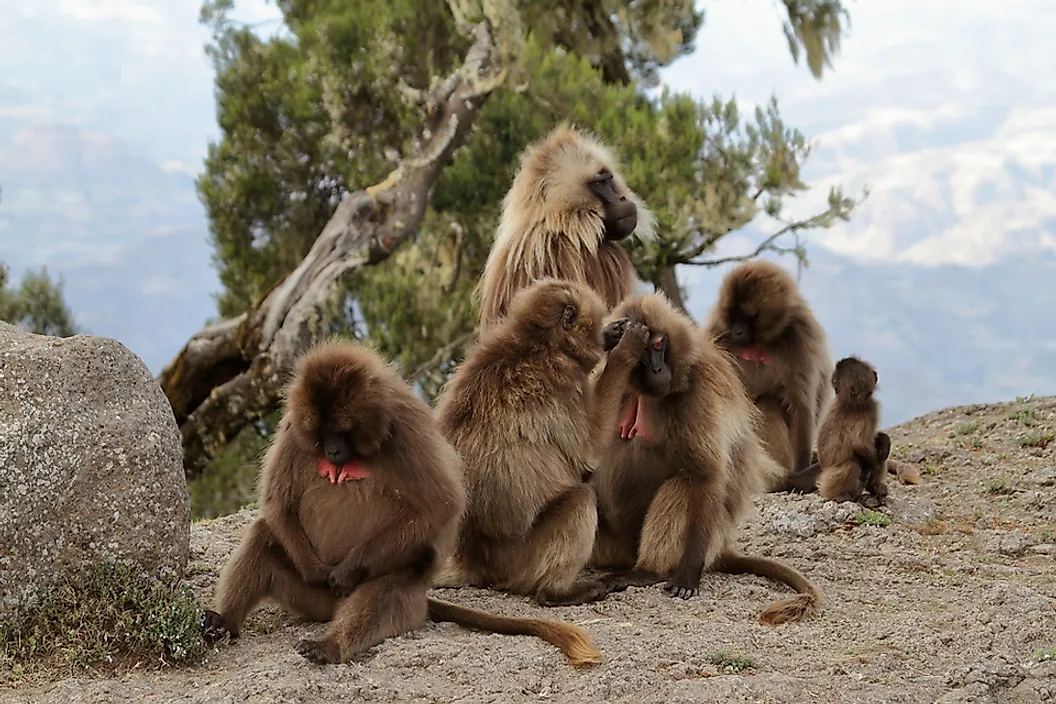Unique Species Of Africa: The Gelada

Africa is home to a variety of unique animals that cannot be found anywhere else in the world. One example is the gelada, which is a type of monkey that is the last surviving species of ancient grazing primates found only in the Ethiopian highlands. The animal lives at elevations between 5,900 ft and 14,400 ft above sea level, sleeps on cliffs, and feeds on grasslands. Geladas are the closest wild primates to humans in terms of their intelligence, sociability, and unique diet.
Physical Description
There are two subspecies of the Gelada: the northern gelada; and the southern gelada, also known as Heuglin’s gelada. The animal is large, strong and covered in the dark brown hair, with a dark, hairless face and a short muzzle. Geladas have short tails with fluffy tufts of hair on the end. The gelada has an hour-glass shaped patch on its chest, which is bright red in males, that helps to distinguish it from the baboon. Male geladas are larger, weighing an average of 40.8 pounds, while females weigh an average of 24.3 pounds. As a grass eater, the gelada developed certain unique adaptations, such as sturdy small fingers used to pull grass and small, narrow incisor teeth for chewing. When feeding, the gelada squats on its hind legs and moves by sliding them without changing posture
Social Structure
Like many other primates, geladas band together in groups that range from reproductive units that are made up of one to 12 females, young ones, and a domineering male. The next grouping unit is the band, which consists of between 2 and 27 reproductive units, and lastly the herd, which is made up of close to 60 reproductive units. Herds are usually short-lived, as they are made to serve a specific purpose, after which the geladas disband back to their usual bands and reproductive units.
Interesting Facts About the Gelada
Geladas are graminivorous and 90% of their diet consists of grass, which eat continuously for up to 10 hours a day. However, since grass does contain significant nutrients essential for their survival, geladas sometimes also sometimes eat flowers and deep roots of certain plants to supplement their grass diet. When conditions become harsh and food is scarce, geladas organize raid parties on human farms to steal food. This practice has been accelerated by the rapid encroachment of humans on gelada habitats. Geladas can form a herd as large as 1200 members, which makes them the largest gathering of primates after humans, although this kind of herding usually occurs only to protect against potential danger. Geladas use more than 30 different calls to communicate, making them the most advanced among wild primates. Furthermore, geladas do not grunt, but instead use vocalizations and lip-smacking to create what resembles a dialect that enables them communicate. Geladas are adventurous, and after an intense day of grazing they usually huddle together and sleep on the edges of cliffs as high as 16,000 feet, which would result in death if they fall.











